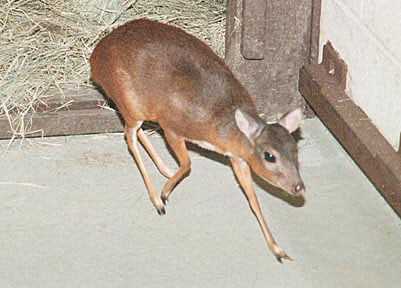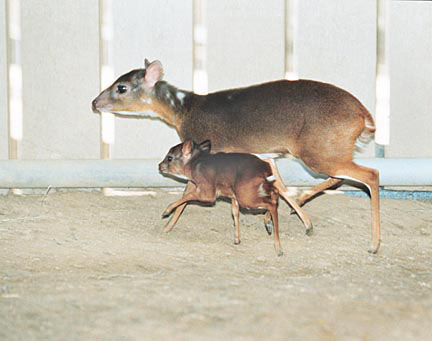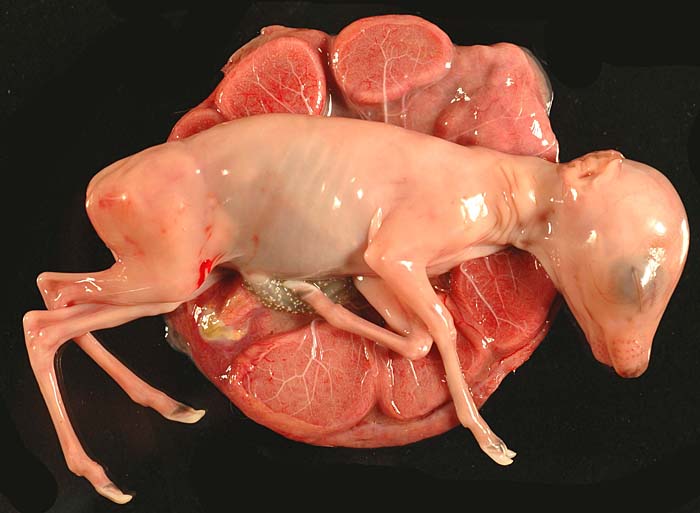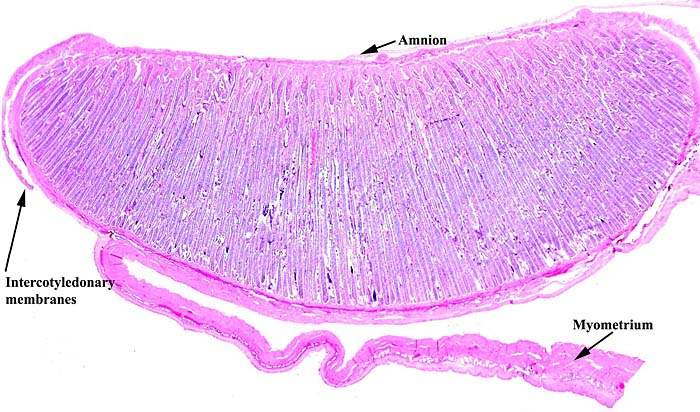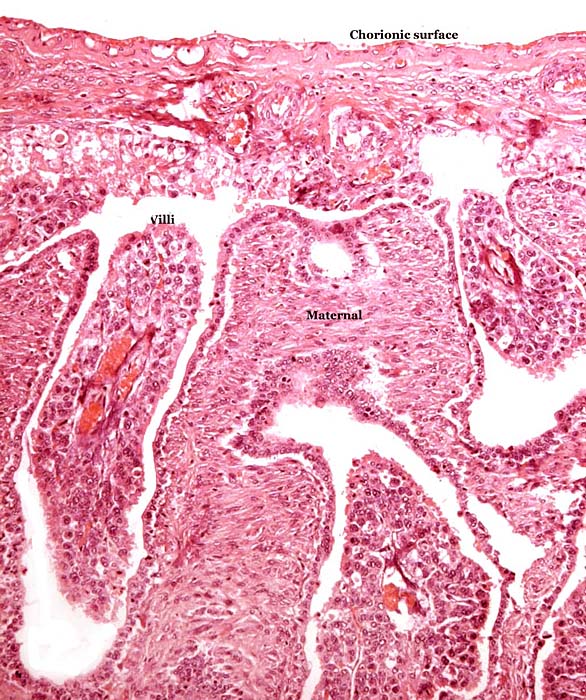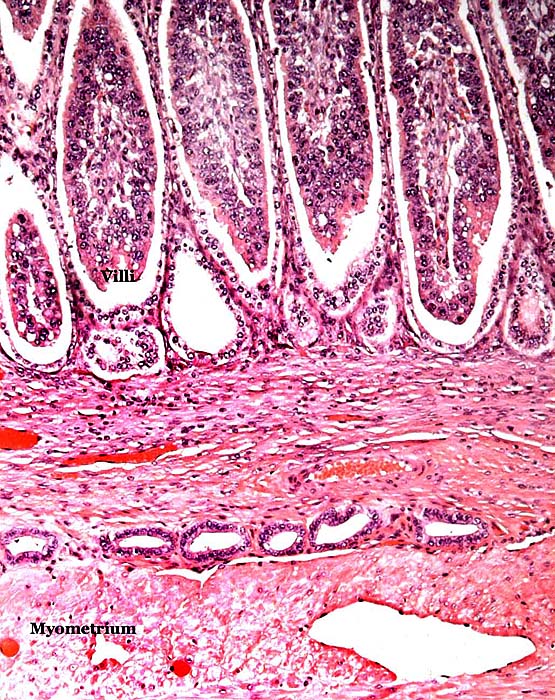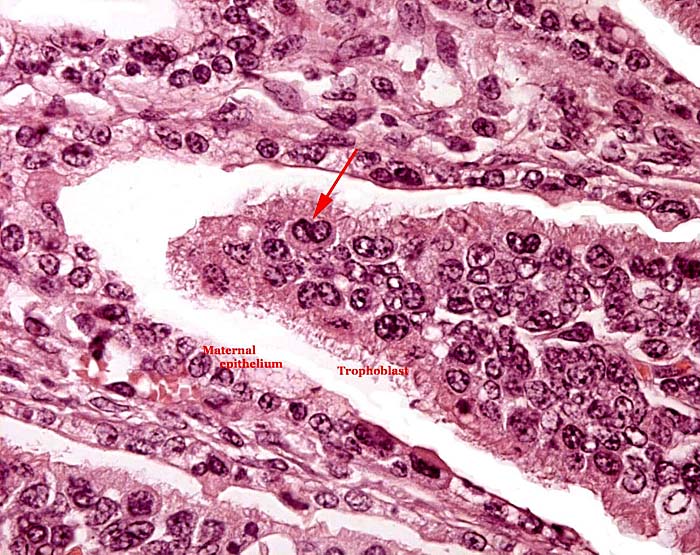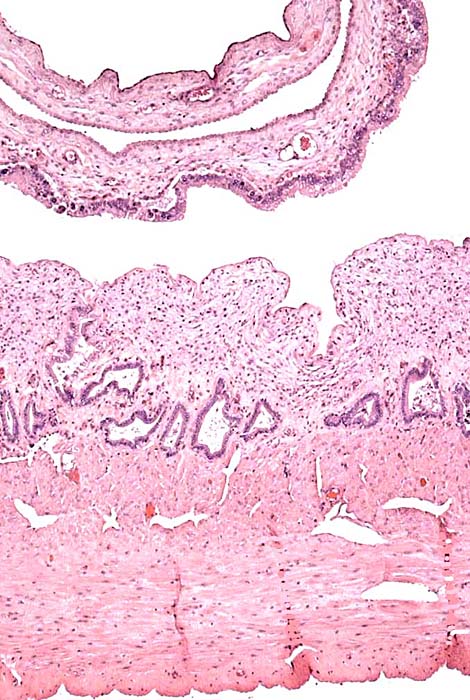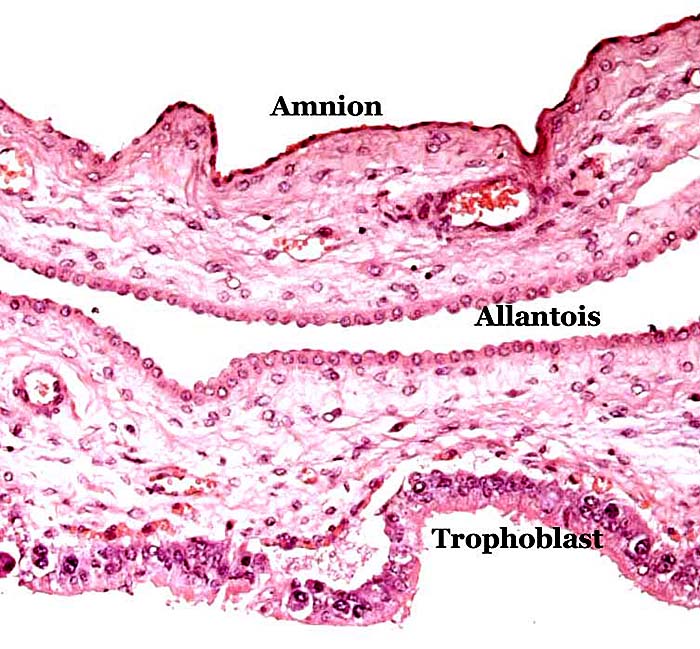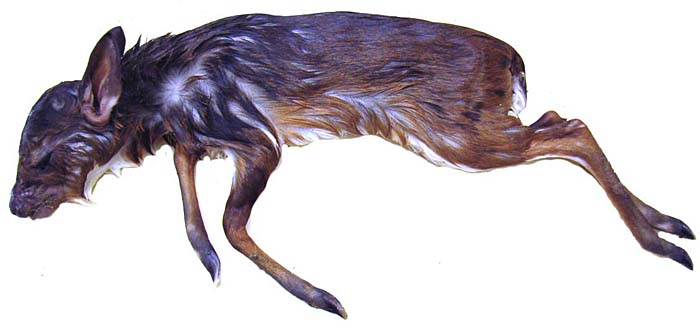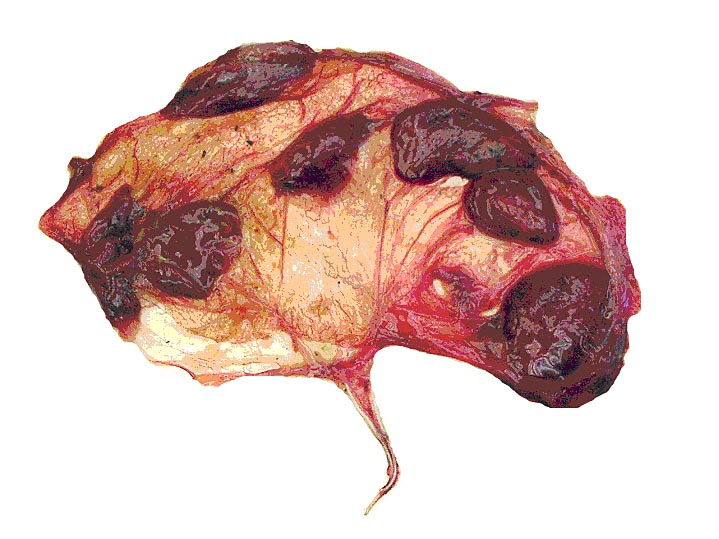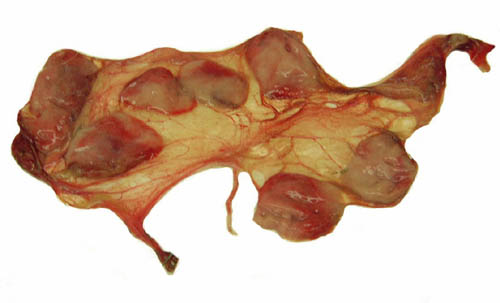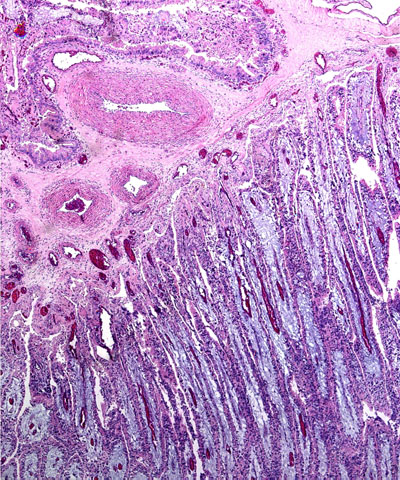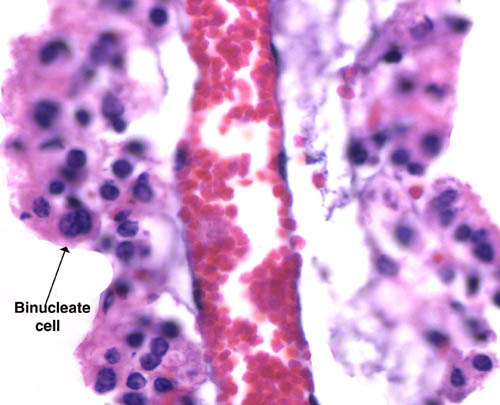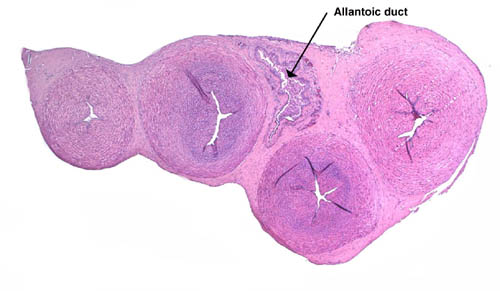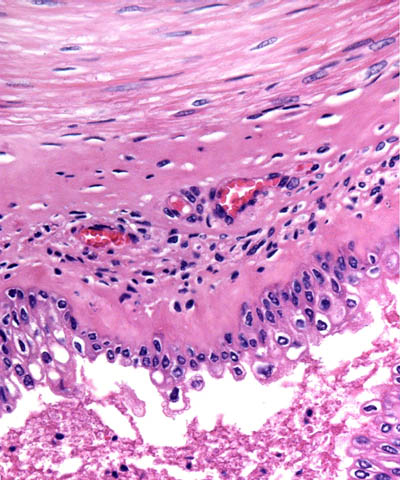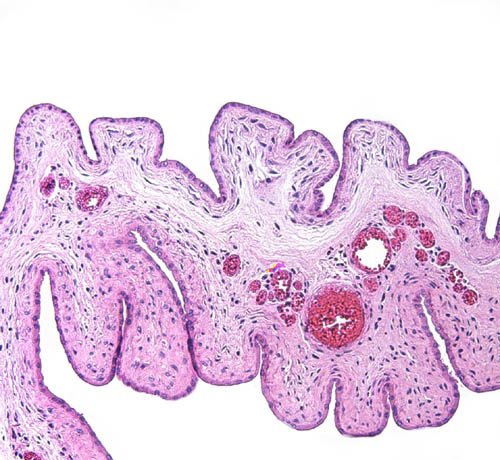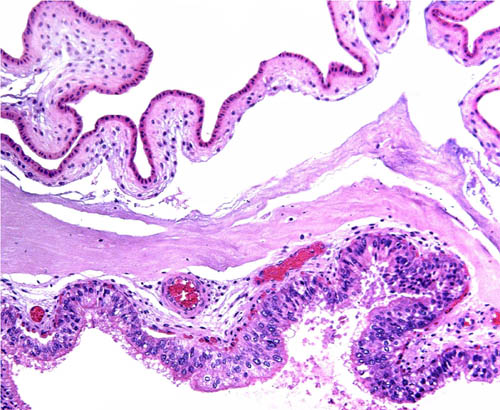|
9) Trophoblast external to barrier
No extravillous trophoblast is likely to be present, but no implanted placenta has been described.
10) Endometrium
This is unknown, as no term placenta has been described that was attached to the uterus.
11) Various features
Except for the extremely small size, no unusual features were observed.
12) Endocrinology
No studies are known to me.
13) Genetics
The chromosome number of neotragini is complex. Kingswood et al. (1998) studied phenotypically similar specimens of the suni (Neotragus moschatus) from several zoological gardens. They found chromosome numbers varying between 2n=52 and 2n=56. This raised the question whether the specimens belonged to different subspecies or, whether these chromosomally divergent karyotypes should be assigned to different species, albeit look-alikes. Studies from the wild populations have not been undertaken to clarify this question. The results just cited also indicate that perhaps intermediate forms (?hybrids) of animals with this "cryptic chromosomal variation" are subfertile. Similar problems have been identified in dik-diks and in a few other African gazelles. True, known interspecific hybrids have not been described. The chromosome number of Royal antelopes has not yet been determined. Our cultures are in progress and, now finished, are added at this place. The interesting result of these cultures is that the chromosome number is 2n=36, with numerous acrocentrics. This raises interesting questions that we are currently exploring.
The genetic study of the mitochondrial cytochrome b gene gene (Matthee & Robinson, 1999) was referred to at the beginning of the chapter.
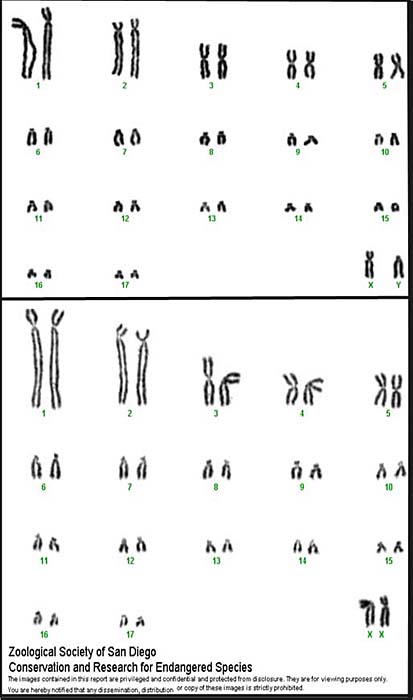 |
Male and female karyotypes of Royal antelopes from the San Diego Zoo. |
| |
|
14) Immunology
No studies are known to me.
15) Pathological features
Izard & Umfleet (1971) reported infection with Haemonchus contortus and strongylodiasis in their suni antelopes.
16) Physiologic data
No studies are known to me.
17) Other resources
Cell lines of the suni are available from the study of Kingswood et al. (1998). The lines from the Royal antelope will also become available. They can then be obtained by contacting Dr. Oliver Ryder at: oryder@ucsd.edu.
18) Other remarks - What additional Information is needed?
Implanted placentas are needed to fill in the gaps of knowledge. The exact length of gestation remains also unknown.
Acknowledgement
The animal photograph in this chapter comes from Ron Garrison at the Zoological Society of San Diego. I appreciate also very much the help of the pathologists at the San Diego Zoo.
References
Gentry, A.W.: The subfamilies and tribes of the family Bovidae. Mamm. Rev. 22:1-22, 1992.
Izard, J. and Umfleet, K.: Notes on the care and breeding of the suni Nesotragus moschatus at Dallas Zoo. Int. Zoo Ybk.11:129, 1971.
Jones, M.L.: Longevity of ungulates in captivity. Int. Zoo Ybk. 32:159-169, 1993.
Kellas, L.M.: The placenta and foetal membranes of the antelope Ourebia ourebi (Zimmermann). Acta Anat. 64:390-445, 1966.
Kingswood, S.C., Kumamoto, A.T., Charter, S.J. and Jones, M.L.: Cryptic chromosomal variation in suni Neotragus moschatus (Artiodactyla, Bovidae). Animal Conserv. 1:95-100, 1998.
Matthee, C.A. and Robinson, T.J.: Cytochrome b phylogeny of the family bovidae: Resolution within the alcelaphini, antilopini, neotragini, and tragelaphini. Molec. Phylogen. Evol. 12:31-46, 1999.
|
